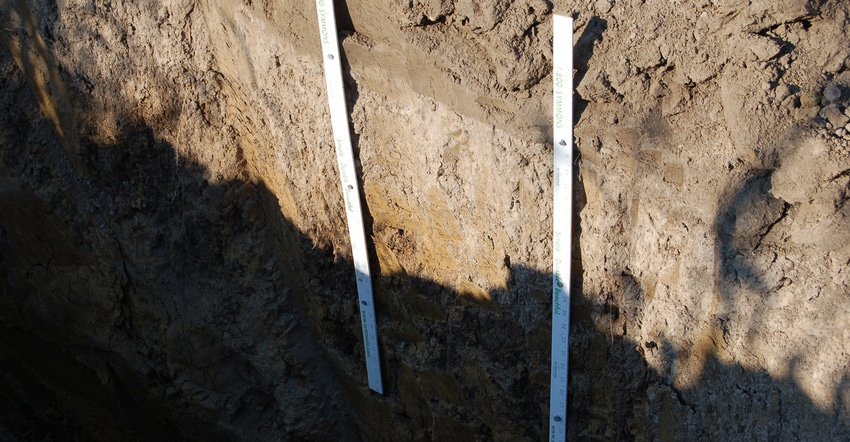
The goal of this “Climate Watch” column is to generate conversations about climate change. Gayle Stout, Clinton County, Ind., has joined the conversation. He notes that some scientists say the earth has shifted on its axis at least 2 degrees over time. They contend that this shift affects high and low pressures coming from the oceans, changing the distribution of precipitation.
Could this theory explain natural climate change? Is it why two glaciers in the past 200,000 years pushed ice down across the Midwest? The most recent was the Wisconsin glacier, which receded in an irregular pattern below Indianapolis. Well over 100,000 years before that, the Illinoian glacier reached southern Indiana.
We asked Gary Steinhardt, a Purdue University Extension soil scientist, to explain Indiana’s ice ages and possible ties to the “wobbling Earth” theory.
“Patterns of features and striations gouged into bedrock suggest that glaciers formed in the Hudson Bay area as ice never completely melted during annual cycles before more ice formed,” he says. “Eventually these layers accumulated and ‘flowed’ southward.”
Impact of glaciers on climate
So why did a glacier melt, only to be replaced by another glacier much later? Then it melted, leaving Indiana’s current soil types.
“One theory is that the Earth wobbles on its axis,��” Steinhardt explains. “Some believe it does so in about a 200,000-year cycle, leading to warming and cooling. The 200,000-year cycle lines up roughly with formation and melting of glaciers.”
However, he believes there’s more to understanding natural climate change than a possible cycle affecting glaciers. Other physical events could change everything. One relates to continental drift and shifting of the Earth’s plates beneath the surface.
A geology professor who commanded a Navy attack transport ship during World War II documented that there were mountains on the floor of the Pacific Ocean. His discovery indicated boundaries of plates that make up the Earth’s crust. If a seismic shift occurred, say in the Western U.S., it could have an impact that might alter the ongoing effect of wobbling of the axis, Steinhardt says.
More climate theories
According to Carol Rasmussen of NASA’s Earth Science News Team, in an article published by NASA on April 7, 2016, recent discoveries add to the wobbling Earth theory, proposed in 1899.
Newer research confirms that the Earth indeed wobbles around an invisible axis through its north and south poles, instead of spinning smoothly like a desktop globe. However, the “spin axis” also drifts slowly around the poles. The farthest it’s drifted since observations began is 37 feet.
How slowly does natural climate change? Researchers contend that the Earth’s mantle is still readjusting to the loss of ice on North America after the last ice age!
Before 2000, the Earth’s axis drifted toward Hudson Bay and Canada. Since then, it turned abruptly east, drifting toward the British Isles and moving twice as fast, at 7 inches per year, Rasmussen says. Here’s where it gets interesting. Scientists now believe changes in the amount of water in the continents, not ice, affect both the Earth’s wobble and drift. They note these factors seem particularly sensitive to depletion of water in the sub-Indian continent in Eurasia.
It’s obvious that science behind natural climate change is complex. Share your thoughts at [email protected] or P.O. Box 247, Franklin, IN 46131; or call 317-431-8766.
About the Author(s)
You May Also Like




